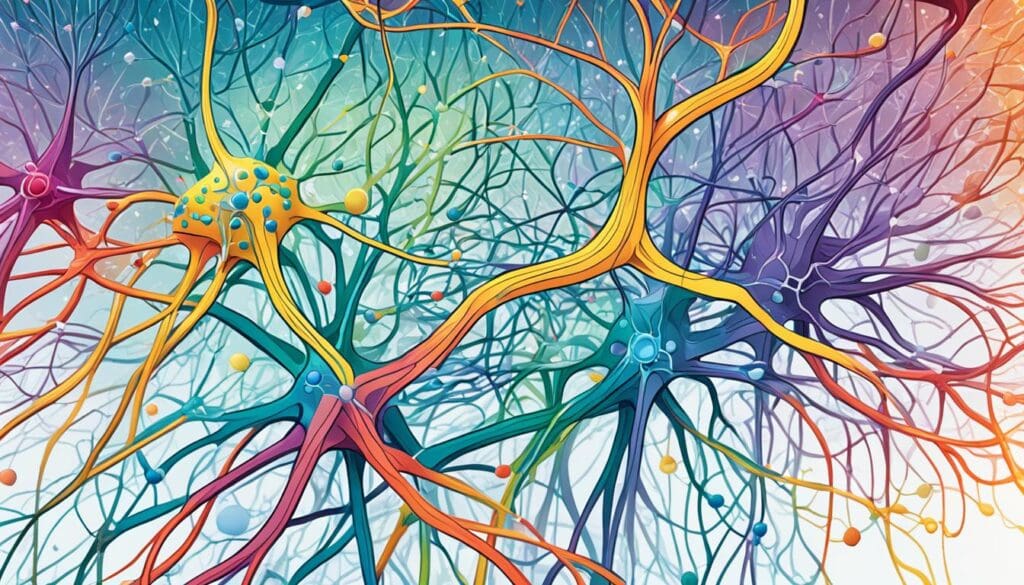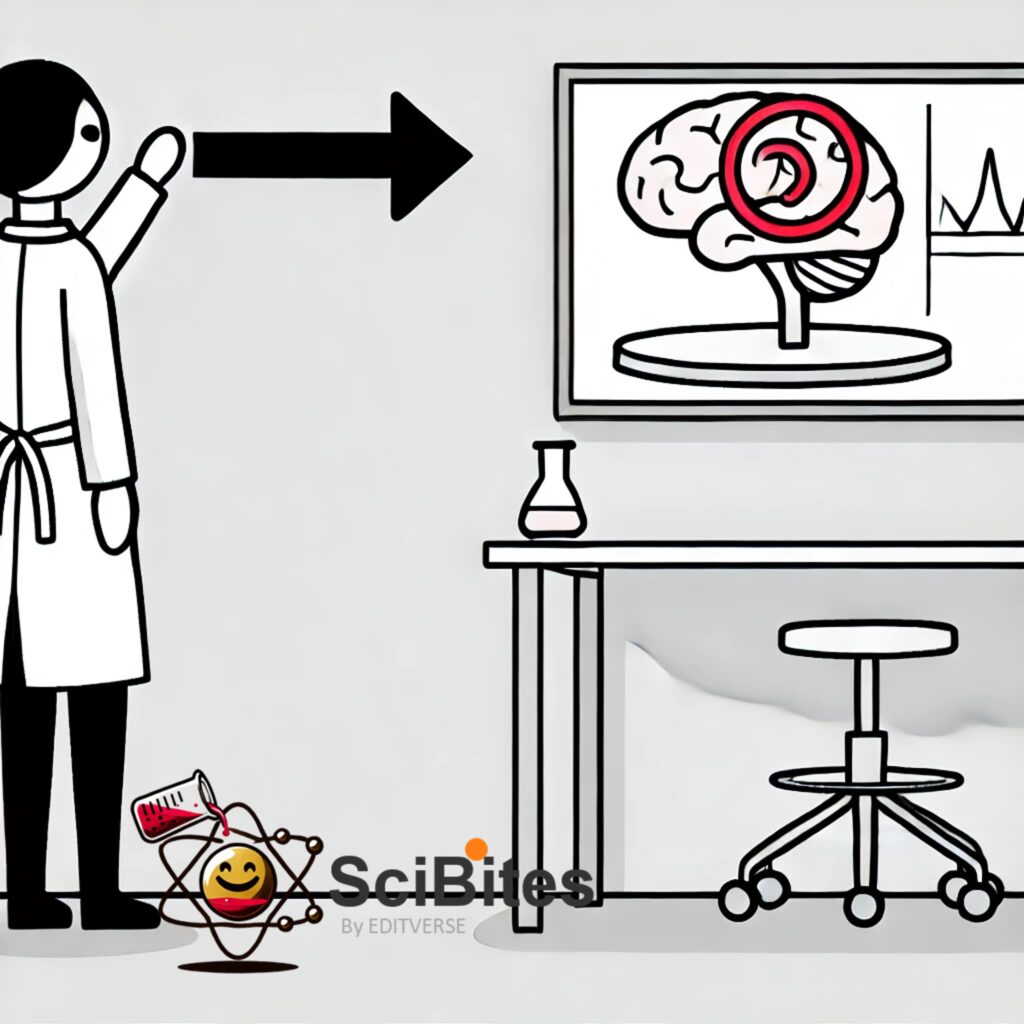“The human brain has the remarkable ability to reorganize itself by forming new connections between neurons, a process known as neuroplasticity.” – Dr. Eric Kandel, Nobel Laureate in Physiology or Medicine.
Neuroplasticity: How Your Brain Rewires Itself
📌 What
Neuroplasticity refers to the brain’s ability to change and adapt throughout life. Key aspects include:
- Structural changes in neural connections
- Functional reorganization of brain regions
- Creation of new neurons (neurogenesis)
- Strengthening or weakening of synaptic connections
- Adaptation to environmental changes, learning, and experiences
- Occurs throughout the lifespan, not just in childhood
- Involves various mechanisms at cellular and molecular levels
🎯 Why
Understanding neuroplasticity is crucial for several reasons:
- Learning and memory: Explains how we acquire and retain new information
- Recovery from brain injuries: Provides hope for rehabilitation after stroke or trauma
- Treatment of neurological disorders: Informs therapies for conditions like Alzheimer’s
- Psychological health: Underpins treatments for mental health disorders
- Cognitive enhancement: Suggests ways to improve brain function throughout life
- Educational strategies: Informs teaching methods and lifelong learning approaches
- Understanding human adaptability: Explains how we adjust to new environments and challenges
🛠️ How
Neuroplasticity occurs through various mechanisms:
- Synaptic plasticity: Strengthening or weakening of connections between neurons
- Neurogenesis: Formation of new neurons, particularly in the hippocampus
- Axonal sprouting: Growth of new nerve endings to form new neural pathways
- Dendritic remodeling: Changes in the structure of dendrites to alter neural connections
- Functional reorganization: Reallocation of brain functions to different areas
- Myelination changes: Alterations in the myelin sheath affecting signal transmission speed
- Neurotransmitter regulation: Changes in chemical signaling between neurons
💡 Facts & Figures
- The human brain has approximately 86 billion neurons
- Each neuron can form up to 10,000 synaptic connections
- The brain uses about 20% of the body’s total energy
- Neuroplasticity is most pronounced in childhood but continues throughout life
- London taxi drivers have been shown to have larger hippocampi due to their extensive spatial memory use
- Learning a new skill can increase gray matter in relevant brain areas within weeks
🌟 Tips & Trivia
- Regular exercise can enhance neuroplasticity and cognitive function
- Learning a new language can increase gray matter density in the brain
- Mindfulness meditation has been shown to alter brain structure and function
- Sleep plays a crucial role in consolidating new neural connections
- The concept of “use it or lose it” applies to neural pathways
- Neuroplasticity can be both adaptive (beneficial) and maladaptive (harmful)
📰 Recent News & Developments
- Research is exploring neuroplasticity-based treatments for neurodegenerative diseases
- New brain-computer interfaces are leveraging neuroplasticity for prosthetic control
- Studies are investigating the role of neuroplasticity in addiction and its treatment
- Advanced neuroimaging techniques are providing new insights into brain changes over time
- Researchers are exploring the potential of transcranial magnetic stimulation to enhance neuroplasticity
Our brain is amazing and always changing. It adapts based on what we experience, do, and see around us. This ability, called neuroplasticity, lets our brain make new connections and paths. It helps us learn, recover from injuries, and stay mentally healthy.
Neuroplasticity is key to our ability to learn and grow. It lets the brain change its structure and function. This means creating new paths and adjusting old ones based on what we need and experience.

Key Takeaways
- Neuroplasticity is the brain’s ability to change and adapt due to experience, allowing it to form new neural connections and pathways.
- Neuroplasticity enables the brain to learn new skills, enhance cognitive abilities, recover from injury, and improve overall brain fitness.
- The brain continues to rewire itself throughout our lives, even after puberty, challenging the previous belief that the brain is static after a certain age.
- Factors like exercise, environment, repetition, motivation, and mindfulness can foster neuroplasticity and promote brain health.
- While some medical conditions can limit neuroplasticity, the brain’s remarkable ability to adapt and change remains a testament to its resilience and potential.
What is Neuroplasticity?
Neuroplasticity is the brain’s amazing ability to change and adapt over time. It shows how the brain can change its connections and pathways based on what we experience, learn, and go through. This lets the brain make new connections, strengthen old ones, and even create new neurons. This helps us learn, remember, and overcome challenges.
Definition and Introduction
The term “neuroplasticity” comes from the Greek words “neuron” (nerve cell) and “plastic” (meaning changeable or malleable). It means the brain’s flexibility to change itself. This process is ongoing from childhood to old age.
Research in neuroplasticity has changed how we see the brain. It’s not fixed; it can change and adapt. The brain can reorganize and transform itself in response to new experiences.
- Neuroplasticity helps the brain make new connections and pathways, and even create new brain cells.
- It lets the brain adapt to changes, learn new skills, and recover from injuries or diseases.
- Neuroplasticity is key to learning new things, developing new behaviors, and improving cognitive and emotional resilience.
Learning about neuroplasticity is key to understanding the brain’s potential. It helps us improve, learn, and adapt. By using neuroplasticity, we can grow personally, improve our mental health, and increase our well-being.
“Neuroplasticity is the brain’s ability to reorganize itself by forming new neural connections throughout life. This dynamic process allows the brain to adapt and change in response to experience.”
Neuroplasticity is crucial for learning, remembering, and adapting to our changing world. By exploring this amazing ability, we can improve our thinking skills, support mental health, and grow personally and resiliently.
Types of Neuroplasticity
The brain’s amazing ability to change and adapt is called neuroplasticity. It comes in two main forms: functional plasticity and structural plasticity. These types help the brain keep evolving and changing based on our experiences, learning, and the world around us.
Functional Plasticity
Functional plasticity means the brain can change how it works and processes information. It lets the brain shift its resources and change roles as needed. This is seen when one brain area takes over another’s job after an injury.
Structural Plasticity
Structural plasticity is about physical changes in the brain, like growing new neurons and changing connections. It’s key for learning and remembering things over time. The brain changes its structure to fit new info and experiences. This happens a lot in childhood and adolescence, when the brain is growing fast.
Functional and structural plasticity work together. They help the brain keep evolving and adapting to life’s changes. Understanding these types shows us how amazing the brain is at growing and changing. It also helps us see how we can use this for personal and mental growth.
| Type of Neuroplasticity | Description | Key Features |
|---|---|---|
| Functional Plasticity | The brain’s ability to modify its activity and information processing |
|
| Structural Plasticity | Physical changes in the brain’s anatomy, such as the growth of new neurons and restructuring of neural connections |
|
Brain Development and Neuroplasticity
The early years are key for brain growth and flexibility. At birth, each brain cell has about 2,500 connections. By age 3, this jumps to 15,000 connections per cell. But, adults have fewer connections than a 3-year-old because the brain prunes some connections as we learn.
This process, called synaptic pruning, makes our brains more efficient. It strengthens some connections and drops others.
Early Childhood Brain Growth
In the first few years, the brain adapts best to its surroundings. Neurons that get used a lot make stronger connections. Those not used much or at all may die off. This shapes the brain to fit the child’s life.
Studies show how a child’s environment affects their brain and thinking skills. Kids from wealthier homes often pay better attention and do better in school. But, kids in poverty might find it hard to focus and learn, which can hurt their school and thinking skills.
| Key Findings | Impact |
|---|---|
| Blind individuals demonstrate more acute hearing to ambiguous sounds in the peripheral auditory field due to brain rewiring. | Neuroplastic changes in response to experience can produce beneficial effects on cognition in individuals with sensory impairments. |
| Congenitally deaf individuals show increased ability to detect changes in the peripheral visual field and tactile inputs attributed to neural rewiring. | The brain’s remarkable adaptability allows it to compensate for the loss of one sense by enhancing the processing of other senses. |
| A training program focused on attention skills for low-income children led to significant improvements in language ability, nonverbal IQ, social skills, and problematic behavior. | Targeted interventions can effectively restructure children’s brains, providing cognitive benefits that are comparable to children from higher socioeconomic backgrounds. |
The brain’s ability to change and adapt is clear in early childhood. Understanding how the brain grows and changes helps us support kids better. This supports their growth and sets them up for success in learning and life.
Understanding Neuroplasticity: How Your Brain Rewires Itself
Neuroplasticity is the brain’s amazing ability to change and adapt over time. It shows us how our brains can change themselves. This happens through creating new neural pathways and changing old ones. Our brains learn, grow, and heal based on our experiences and actions.
Habits are a big part of neuroplasticity. They form through a three-part loop in the brain. First, a cue triggers a behavior. Then, the routine is the action itself. Finally, the reward is when the brain feels good and remembers the loop for next time.
Even if a habit isn’t good for us, the short-term happiness makes us want to do it again. Researchers say habits with quick rewards are easier to start. But, breaking bad habits is hard because our brains like the quick rewards they give us.
But, there’s hope. By understanding how habits form, we can use neuroplasticity to change our brains for the better. We can make healthier habits by practicing regularly, being in a stimulating place, and focusing on long-term rewards.
“Neuroplasticity is defined as the brain’s capacity to change in response to behavior.”
Learning how our brains adapt and change helps us make positive changes. It lets us reach our full potential.
Mechanisms of Neuroplasticity
Neuroplasticity lets the brain change itself in response to new experiences. It uses neuronal regeneration and collateral sprouting, as well as synaptic plasticity. These processes help the brain adapt and learn new things.
Neuronal Regeneration and Collateral Sprouting
Neuronal regeneration helps fix damaged neurons. Collateral sprouting creates new connections between healthy neurons. This keeps the brain working well, even after injury or changes in senses.
- New neurons, or neurogenesis, are born in areas like the hippocampus and olfactory bulb. This is key to neuroplasticity.
- Axonal sprouting means damaged axons grow new branches for new connections.
- Dendritic branching lets neurons make new connections and change old ones.
These changes help the brain learn new skills, remember things, and adjust to changes in the environment or thinking.
Synaptic Plasticity
Synaptic plasticity changes how neurons connect based on experience. Long-term potentiation (LTP) is a type of synaptic plasticity. It happens when neurons get stimulated a lot and respond strongly.
“Cells that fire together wire together, strengthening connections between neurons. Practice makes permanent; the more times a network is stimulated, the stronger and more efficient it becomes.”
Things like exercise, being in a good environment, repeating tasks, motivation, certain chemicals, and some drugs can boost synaptic plasticity. This makes the brain better at adapting and learning.
Functional Reorganization in Neuroplasticity
Neuroplasticity is the brain’s amazing ability to change and adapt. It’s not just about structure changes. It also includes functional reorganization, like equipotentiality, vicariation, and diaschisis. These show how the brain can change and move resources around in response to new experiences.
Equipotentiality means that if one brain area gets damaged, another can take over its job. This shows the brain’s flexibility. Vicariation is when the brain changes other areas to handle new tasks. This lets the brain adapt amazingly well.
Diaschisis shows how connected the brain is. It means damage in one area can affect another, even if they’re far apart. This shows the brain’s complex nature and how it works together to help us think and behave.
These ideas of functional reorganization in neuroplasticity are key to understanding brain development, recovery from injury, and treating neurological disorders. By studying how the brain adapts, we can find better ways to help it stay healthy and resilient.
“The brain has the remarkable ability to reorganize and reallocate its resources in response to various stimuli and experiences, a process known as functional reorganization.”
Studying functional reorganization in neuroplasticity helps us see how flexible and adaptable the brain is. It sheds light on the complex processes that shape our thinking and behavior over time.

Neuroplasticity After Brain Injury
After a brain injury, like a stroke or traumatic brain injury (TBI), the brain’s ability to change and adapt is key. This process, called neuroplasticity, helps the brain recover. It involves many steps, each with its own phase of neuroplasticity.
Phases of Neuroplasticity After Injury
There are three main phases of neuroplasticity after a brain injury:
- The acute phase starts right after the injury. It sees a lot of neural activity as the brain tries to fix the damage.
- The subacute phase comes next, in the weeks and months after. Here, the brain reorganizes itself, making new connections to help restore function.
- The chronic phase lasts for years. It’s when the brain keeps adapting and improving its connections. This helps people get better at skills through practice and rehab.
This process shows how strong and adaptable the brain is. It’s the basis for many rehab strategies after brain injuries. Knowing about these phases helps doctors and researchers make better treatments to help the brain heal and work better.
| Phase | Timeframe | Key Characteristics |
|---|---|---|
| Acute | Immediately after injury | Surge in neural activity, brain attempts to compensate for damage |
| Subacute | Weeks to months after injury | Structural and functional reorganization, new neural connections and pathways form |
| Chronic | Years after injury | Continued adaptation and optimization of connections, skill recovery through practice |
Understanding the phases of neuroplasticity after brain injury helps doctors make better treatments. This can improve how well patients recover. Also, long-term studies on this topic give us important insights. They show us how the recovery process changes over time and what affects it.
“Neuroplasticity is the brain’s remarkable ability to adapt and rewire itself, which becomes especially crucial in the aftermath of a brain injury.”
Promoting Neuroplasticity
Our brains can change and adapt, a process called neuroplasticity. This ability helps us grow, learn, and stay well. Studies show our brains keep changing throughout life, showing we can always improve.
Our experiences change our brains, making new connections between neurons. This means new experiences can change how we think, act, and feel. To use this power, we can do brain-boosting activities that help our brains adapt.
- Regular exercise, at least 30 minutes a day, boosts brain function and neuroplasticity.
- Getting 7-9 hours of good sleep each night helps brain health and neuroplasticity.
- Learning new skills, like a language or a hobby, creates new brain connections.
- Mindfulness practices, like meditation, reduce stress and help with learning and memory.
- Creative activities, like writing, work different brain areas and help us think deeply.
By adding these lifestyle factors that enhance neuroplasticity, we make our brains more adaptable and resilient. This supports our health and well-being. Our choices and experiences can unlock our brain’s potential. Let’s use neuroplasticity to grow and improve ourselves.
Personalized nutrition through DNA testing is another way to use neuroplasticity for better brain health and wellness.
“Neuroplasticity is the brain’s ability to change and adapt throughout life, challenging the belief that the brain’s structure and functions are static.”
| Activity | Impact on Neuroplasticity |
|---|---|
| Regular Exercise | Improves brain function and increases neuroplasticity |
| Quality Sleep | Supports brain health and neuroplasticity |
| Learning New Skills | Leads to the formation of new neural connections |
| Mindfulness Practices | Reduces stress and protects cognitive functions |
| Creative Activities | Stimulate various brain regions and improve mood |
Limitations and Challenges of Neuroplasticity
Neuroplasticity is seen as a positive change in the brain that helps it adapt. But, it’s important to know its limits and challenges. The brain can change and reorganize itself, but it has its own limits. Knowing these limits helps us understand what to expect in patient care and rehabilitation.
Recent studies have shown that the brain doesn’t completely change itself after injury or loss. Instead, it gets better at what it already does and uses hidden skills it had since birth. It doesn’t create new functions from scratch.
For example, the idea that the brain of the blind can start to hear and use echolocation has been doubted. Also, the idea that the healthy part of the brain can take over after a stroke has been questioned.
Research now says the brain’s flexibility often means improving what it already does through training. It uses what it has efficiently, not making big changes like in stories.
So, the limits and challenges of neuroplasticity show us the true nature of the brain. It’s very adaptable, but it has its own limits. It can’t change completely or create new functions out of nothing.
| Limitation | Description |
|---|---|
| Constrained Capacity for Plasticity | The brain’s ability to adapt is not limitless, and it is constrained by its underlying structural blueprint. The brain cannot create entirely new functions in unrelated areas following injury. |
| Refining Existing Capacities | The brain’s adaptability often involves refining existing inputs and capacities through training and learning, rather than dramatic reorganization through rewiring. |
| Lack of Functional Pluripotency | There is no period in the brain’s development that offers structural opportunities for functional pluripotency, where the brain can develop entirely new functions. |
In conclusion, knowing the limits and challenges of neuroplasticity is key for realistic patient care and rehabilitation. The brain can adapt amazingly, but it has its limits. Often, hard work and practice are needed for progress.

“The brain’s remarkable but constrained capacity for plasticity requires persistent effort and practice, emphasizing slow and incremental progress rather than quick results.”
Conclusion
Neuroplasticity is the brain’s amazing ability to change and adapt by making new neural paths. This concept is truly remarkable. By learning about neuroplasticity, we can improve our learning, thinking, and recovery from brain damage.
The brain can change and adapt, as shown by studies on brain growth and recovery from injury. Doing mentally challenging activities helps keep our brains sharp. This means learning a new language, practicing mindfulness, or trying new hobbies can make our brains better.
As we learn more about the brain, neuroplasticity will help us understand the human mind better. By using strategies that support neuroplasticity, we can grow, change, and appreciate our brain’s power. The key takeaways on neuroplasticity show us that we can always learn and grow.
FAQ
What is neuroplasticity?
Neuroplasticity is the brain’s ability to change and adapt. It happens because of our experiences. It lets nerve cells change, reorganize, make new connections, and sometimes even create new neurons.
What are the two main types of neuroplasticity?
There are two main types. Functional plasticity changes how nerve cells connect. Structural plasticity grows new neurons and connections.
How does the brain develop and change through neuroplasticity?
In early childhood, the brain grows fast, with many new connections. As we experience more, some connections get stronger, while others fade away. This helps the brain adapt to new things.
How does the brain rewire itself through neuroplasticity?
The brain rewires through two main ways: making new neurons and changing connections. This includes processes like strengthening connections and adapting to changes or damage.
How does the brain respond to injury through neuroplasticity?
After injury, like a stroke, the brain goes through three phases. It tries to recover lost functions by reorganizing itself.
How can we promote neuroplasticity?
We can boost neuroplasticity with exercise, learning new things, and mindfulness. Being in stimulating environments also helps.
Are there any limitations or challenges to neuroplasticity?
While neuroplasticity is mostly good, it’s not always positive. Sometimes, brain changes can be negative, leading to challenges.
Source Links
- https://www.verywellmind.com/what-is-brain-plasticity-2794886 – How Brain Neurons Change Over Time From Life Experience
- https://www.ncbi.nlm.nih.gov/books/NBK557811/ – Neuroplasticity – StatPearls – NCBI Bookshelf
- https://www.bbc.com/reel/video/p098v92g/neuroplasticity-how-to-rewire-your-brain – Neuroplasticity: How to rewire your brain
- https://psychcentral.com/health/what-is-neuroplasticity – How to Rewire Your Brain to Change Old Patterns
- https://www.brainfutures.org/neuroplasticity-101/ – NEUROPLASTICITY 101 – BrainFutures
- https://en.wikipedia.org/wiki/Neuroplasticity – Neuroplasticity
- https://www.research.colostate.edu/healthyagingcenter/2022/05/31/how-to-rewire-your-brain/ – How to rewire your brain – Center for Healthy Aging
- https://positivepsychology.com/neuroplasticity/ – What Is Neuroplasticity? A Psychologist Explains [+14 Tools]
- https://www.psychologicalscience.org/observer/brain-development-and-neuroplasticity – Brain Development and Neuroplasticity
- https://choosemuse.com/blogs/news/rewiring-your-brain-how-neuroplasticity-shapes-our-habits-and-health?srsltid=AfmBOoo5SGddtS52-kpmsU_zCm3n5fZRvyLOv6RZhuS6upJw4_oodGz5 – Neuroplasticity: Rewire your brain for better habits | Muse™ EEG-Powered Meditation & Sleep Headband
- https://www.healthline.com/health/the-science-of-habit – The Science of Habit: How to Rewire Your Brain
- https://sites.bu.edu/daniellerousseau/2023/12/05/neuroplasticity-rewiring-your-brain-through-mindfulness/ – Neuroplasticity–Rewiring Your Brain Through Mindfulness
- https://www.edutopia.org/neuroscience-brain-based-learning-neuroplasticity – Neuroplasticity: Learning Physically Changes the Brain
- https://www.frontiersin.org/journals/psychology/articles/10.3389/fpsyg.2017.01657/full – Frontiers | Dynamic Brains and the Changing Rules of Neuroplasticity: Implications for Learning and Recovery
- https://www.simplypsychology.org/brain-plasticity.html – Brain Plasticity In Psychology | Neuroplasticity
- https://www.ncbi.nlm.nih.gov/pmc/articles/PMC5649212/ – Dynamic Brains and the Changing Rules of Neuroplasticity: Implications for Learning and Recovery
- https://sitn.hms.harvard.edu/flash/2023/neuroplasticity-how-lost-skills-can-be-regained-after-injury-or-illness/ – Neuroplasticity: how lost skills can be regained after injury or illness
- https://www.cognitivefxusa.com/blog/neuroplasticity-treatment-for-concussions – Neuroplasticity Therapy: How It Helps Brain Injury Recovery
- https://www.schooltube.com/the-power-of-neuroplasticity-how-your-brain-rewires-itself/ – The Power of Neuroplasticity: How Your Brain Rewires Itself | SchoolTube
- https://choosemuse.com/blogs/news/rewiring-your-brain-how-neuroplasticity-shapes-our-habits-and-health – Neuroplasticity: Rewire your brain for better habits | Muse™ EEG-Powered Meditation & Sleep Headband
- https://www.forbes.com/sites/forbescoachescouncil/2024/01/23/want-to-improve-rewire-your-brains-neural-pathways/ – Council Post: Want To Improve? Rewire Your Brain’s Neural Pathways
- https://neurosciencenews.com/brain-rewiring-neuroplasticity-25239/ – Brain Doesn’t Rewire Itself, but Enhances Existing Abilities – Neuroscience News
- https://www.scientificamerican.com/article/the-brain-isnt-as-adaptable-as-some-neuroscientists-claim/ – The Brain Isn’t as Adaptable as Some Neuroscientists Claim
- https://mindlabneuroscience.com/neuroplasticity/ – Unlock Neuroplasticity In 10 Steps: A Guide To Brain Mastery
- https://accelerate.uofuhealth.utah.edu/resilience/neuroplasticity-how-to-use-your-brain-s-malleability-to-improve-your-well-being – Neuroplasticity: How to Use Your Brain’s Malleability to Improve Your Well-being
